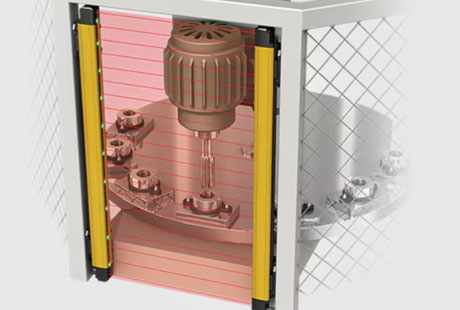What Is Category 4 PL-E?
Key Takeaway
Category 4 PL-E represents the highest level of safety performance under ISO 13849 standards. In this category, safety systems are designed so that no single component failure can lead to the loss of the safety function. PL-E, or Performance Level E, indicates that the risk of a dangerous failure is extremely low, less than once in 100 million operations.
This category ensures that the Mean Time to Failure of Dangerous (MTTFd) components is maximized and that the average Diagnostic Coverage (DCavg) is at least 99%. Essentially, Category 4 PL-E systems provide robust fault tolerance and are essential in high-risk environments where safety cannot be compromised.

Introduction to Category 4 PL-E
Category 4 PL-E stands for “Performance Level E,” the highest rating in machine safety categories defined under the European standard ISO 13849-1. This standard specifies safety requirements and guidance on the principles for the design and integration of safety-related parts of control systems. Category 4 PL-E ensures that safety functions remain operational despite any single fault or combination of faults, making it essential for industries where the failure of safety features could result in severe harm or fatal injuries.

Core Requirements of Category 4 PL-E
The core requirements for achieving Category 4 PL-E include the use of redundancies, diagnostic coverage, and high reliability of components. Systems must be engineered to perform reliably in high-demand or high-risk conditions, with a failure rate of less than once in 100,000 years of continuous operation. Implementing such systems involves sophisticated design techniques, including multiple redundancy layers, self-testing mechanisms, and fail-safe circuits that enhance the overall integrity and robustness of the safety system.
You May Like to Read
Steps to Implement Category 4 PL-E
Implementing Category 4 PL-E involves several critical steps: initially assessing risk, designing safety-related parts of control systems according to the specified requirements, and validating their performance. It starts with a thorough risk assessment to identify potential hazards, followed by the design and selection of appropriate safety functions that meet the stringent criteria of PL-E. Regular testing and certification by accredited bodies are also essential to ensure the system conforms to the necessary safety standards.
Predictive Analytics and Category 4 PL-E
Integrating predictive analytics into Category 4 PL-E can significantly enhance the reliability and efficacy of safety systems. By utilizing data-driven insights, predictive analytics can forecast potential system failures before they occur, allowing for preemptive maintenance and system adjustments. This proactive approach not only helps in maintaining continuous safety operations but also reduces downtime and extends the lifespan of machinery.
Challenges and Opportunities in Advancing Category 4 PL-E
While implementing Category 4 PL-E provides the highest level of safety, it also presents several challenges, including high costs, complex system requirements, and the need for specialized knowledge. However, these challenges are counterbalanced by opportunities for innovation in safety technology, such as the development of smarter, more integrated safety solutions that can communicate seamlessly with other parts of the industrial network, leading to safer and more efficient operations.
Conclusion
Supporting Category 4 PL-E is crucial for industries operating in high-risk environments, as it ensures the highest level of safety for equipment and personnel. Understanding and implementing this advanced safety standard not only helps in complying with legal regulations but also plays a vital role in fostering a culture of safety and reliability. For new engineers, gaining proficiency in these systems signifies a commitment to upholding and advancing safety standards in the workplace.
